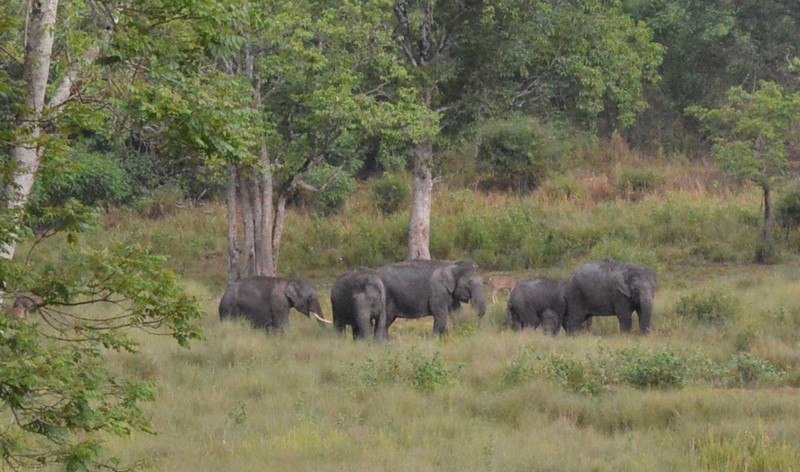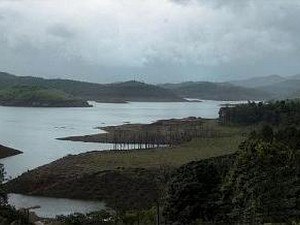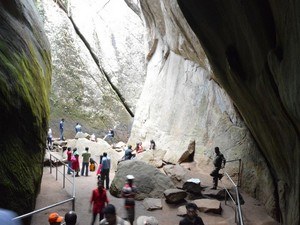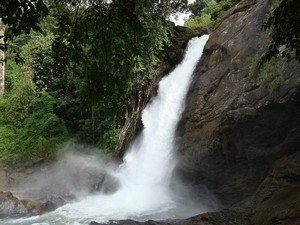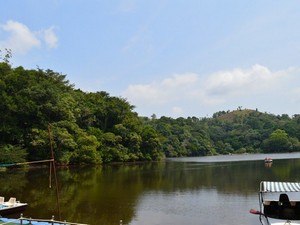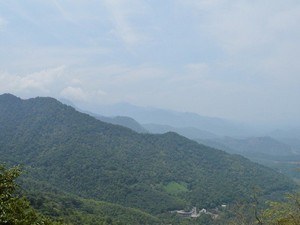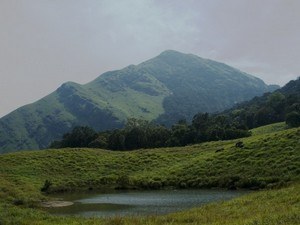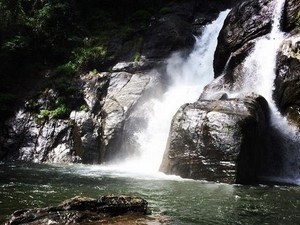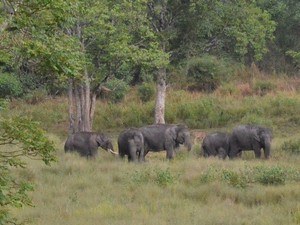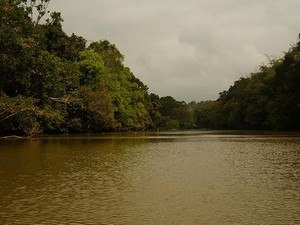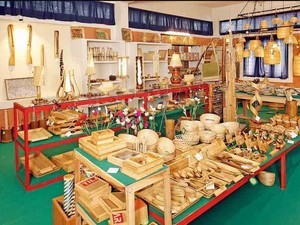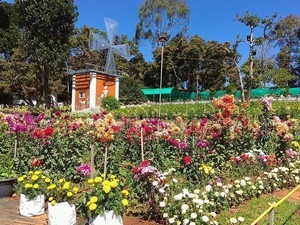Wayanad Wildlife Sanctuary - Muthanga, Wayanad - Timings, Entry Fee, Safari Cost, Safari Booking, Best Time to Visit
Photo Credit: Flickr
 #10 of 48 Places to Visit in Wayanad
#10 of 48 Places to Visit in Wayanad
 Distance (From Wayanad): 38 Kms
Distance (From Wayanad): 38 Kms
 Trip Duration (Including Travel): 4 Hours/Half Day
Trip Duration (Including Travel): 4 Hours/Half Day
 Transportation Options: Bus / Cab / + Walk/Trek
Transportation Options: Bus / Cab / + Walk/Trek
 Travel Tips: 1. Sulthan Bathery is considered as the headquarters of Lower Wayanad WLS.
Travel Tips: 1. Sulthan Bathery is considered as the headquarters of Lower Wayanad WLS.
2. Animal sighting is best in the early morning safari.
3. Jeep safari arranged by Forest dept is the only way to explore the sanctuary.
About Muthunga Wildlife Sanctuary
At a distance of 14 km from Sulthan Bathery and 39 km from Kalpetta, Muthunga Wildlife Sanctuary, also known as Wayanad Wildlife Sanctuary, is a sanctuary and Elephant Reserve in the Wayanad district of Kerala. It is one of the top places of wildlife in Kerala, and among the best places to visit in Wayanad.
History of Muthunga Wildlife Sanctuary
Wayanad Wildlife Sanctuary was declared a wildlife sanctuary in the year 1973. Almost a couple of decades later, in 1991- 92, was brought under Project Elephant, to conserve India’s Asian elephants in their natural habitat. Now an integral part of the Nilgiri Biosphere Reserve, the sanctuary was set up to conserve the biological heritage of the region with due consideration to the general lifestyle of tribes and others whose lives are dependent on the forest. Currently, it holds the title of being the second-largest wildlife sanctuary in the state of Kerala. The Western Ghats, Nilgiri sub-cluster, including all of the sanctuary, is under consideration by the UNESCO World Heritage Committee for selection as a World Heritage Site.
Layout of Wayanad Wildlife Sanctuary
Situated at the border of the Karnataka and Tamil Nadu states, the Wayanad Wildlife Sanctuary is connected to the Nagarhole National Park and Bandipur National Park to the northeast in Karnataka and Mudumalai National Park to the southeast in Tamil Nadu. Collectively, these national parks and wildlife sanctuaries spread across three states form a tropical rainforest corridor. Occupying an area of 345 sq. km, the sanctuary is divided into two separate parts, known as Upper Wayanad WLS and Lower Wayanad WLS also known as Muthanga Wildlife Range. While the region between these two parts was once a forest, commercial efforts ensured that the woods were cleared for tea plantations, making the sections separate and unconnected. Wayanad Wildlife Sanctuary is further divided into 4 ranges according to the mountain ranges, Tholpetty, Kurichiat, Sulthan Bathery, and Muthanga.
Wildlife at Wayanad Wildlife Sanctuary
The reserve is home to a small population of tigers, Elephants, Jungle Cats, Panthers, Civet Cats, Monkeys, Wild dogs, Deers, Spotted Bears, Bison, Gaurs, Cheetah, Wild Bears, Peacock, Owls, Jungle fowls, Woodpeckers, Babblers, Cuckoos. The Sanctuary is covered with moist deciduous teak forests and semi-evergreen tree pastures. The floral variety of the park range from Teak, Bamboo, Maruthu, Karimarithi, Rosewood, Venteak, Vengal, Chadachi, Veteria indica, Lagerstroemia, Lanceolta, Terminalia Paniculata.
Jeep Safari at Muthunga Wildlife Sanctuary
Entry to the sanctuary is only permitted as part of a jeep safari, among the must-to-do things during the Wayanad tour. The forest department has arranged a one and half hours jeep safari into the sanctuary from the entrance at Muthanga. The safaris are arranged in the morning and evening and only a limited number of approved jeeps are allowed into the park. Only 40 jeeps in the morning and 20 jeeps in the evening are allowed for safari. The jeep charge is Rs. 600 per trip. Private vehicles are not allowed inside. Only registered vehicles with permission are allowed inside. The number of passengers per vehicle depends on the seating capacity of the vehicle. Moreover, the group will be guided and accompanied by a tourist guide or forest official. This is an excellent option to remain safe as well as increase the chances of animal sightings. The tickets for the jeep safari are issued at the Forest office situated on the main road. There is no advance booking for safari and the tickets are issued on a first come first serve basis. Ensure you reach the booking counter at least 30 minutes in advance.
Safari Timings: 7 AM - 10 AM & 3 PM - 5 PM
Best Time to Visit Muthunga Wildlife Sanctuary
The Muthanga range of the Wayanad Wildlife Sanctuary is one of the few in the country which is open throughout the year. If sightings are your main concern, then visit the sanctuary in the summer. From April to June, the forests experience scorching heat, and this brings out most of the wild animals to water bodies in the plain view of onlookers who sit inside their safari jeeps. Also, the winter months of October through March are a nice time to enjoy the forest. Sightings may not be so good, but birdwatchers will still have a ball watching indigenous and migratory birds fill the woods. Better to avoid monsoon months (July to September) when Muthanga Wildlife Sanctuary is slushy and the visibility is quite low, making it both uncomfortable and pointless to be out in search of wild animals.
Muthunga Wildlife Sanctuary Safari Timings
Monday: 7 AM - 10 AM (40 Jeeps) & 3 PM - 5 PM (20 Jeeps)
Tuesday: 7 AM - 10 AM (40 Jeeps) & 3 PM - 5 PM (20 Jeeps)
Wednesday: 7 AM - 10 AM (40 Jeeps) & 3 PM - 5 PM (20 Jeeps)
Thursday: 7 AM - 10 AM (40 Jeeps) & 3 PM - 5 PM (20 Jeeps)
Friday: 7 AM - 10 AM (40 Jeeps) & 3 PM - 5 PM (20 Jeeps)
Saturday: 7 AM - 10 AM (40 Jeeps) & 3 PM - 5 PM (20 Jeeps)
Sunday: 7 AM - 10 AM (40 Jeeps) & 3 PM - 5 PM (20 Jeeps)
Muthunga Wildlife Sanctuary Entry Fee
Indians
Entry: Rs. 20 for Adults & Rs. 10 for Children
Jeep Safari: Rs. 300 per Person
Camera: Rs. 25 for Indians
Video: Rs. 150 for Indians
Jeep: Rs. 600 for a maximum of 7 persons
Foreigners
Entry: Rs. 110 for Adults
Jeep Safari: Rs. 300 per Person
Camera: 25 for Foreigners
Video: Rs. 150 for Foreigners
Jeep: Rs. 600 for a maximum of 7 persons
How to Reach Muthunga Wildlife Sanctuary
The main bus stop near Muthanga Wildlife Sanctuary is Sulthan Bathery, which is just 14 km away. One will easily get a bus or cab for hire from here.



